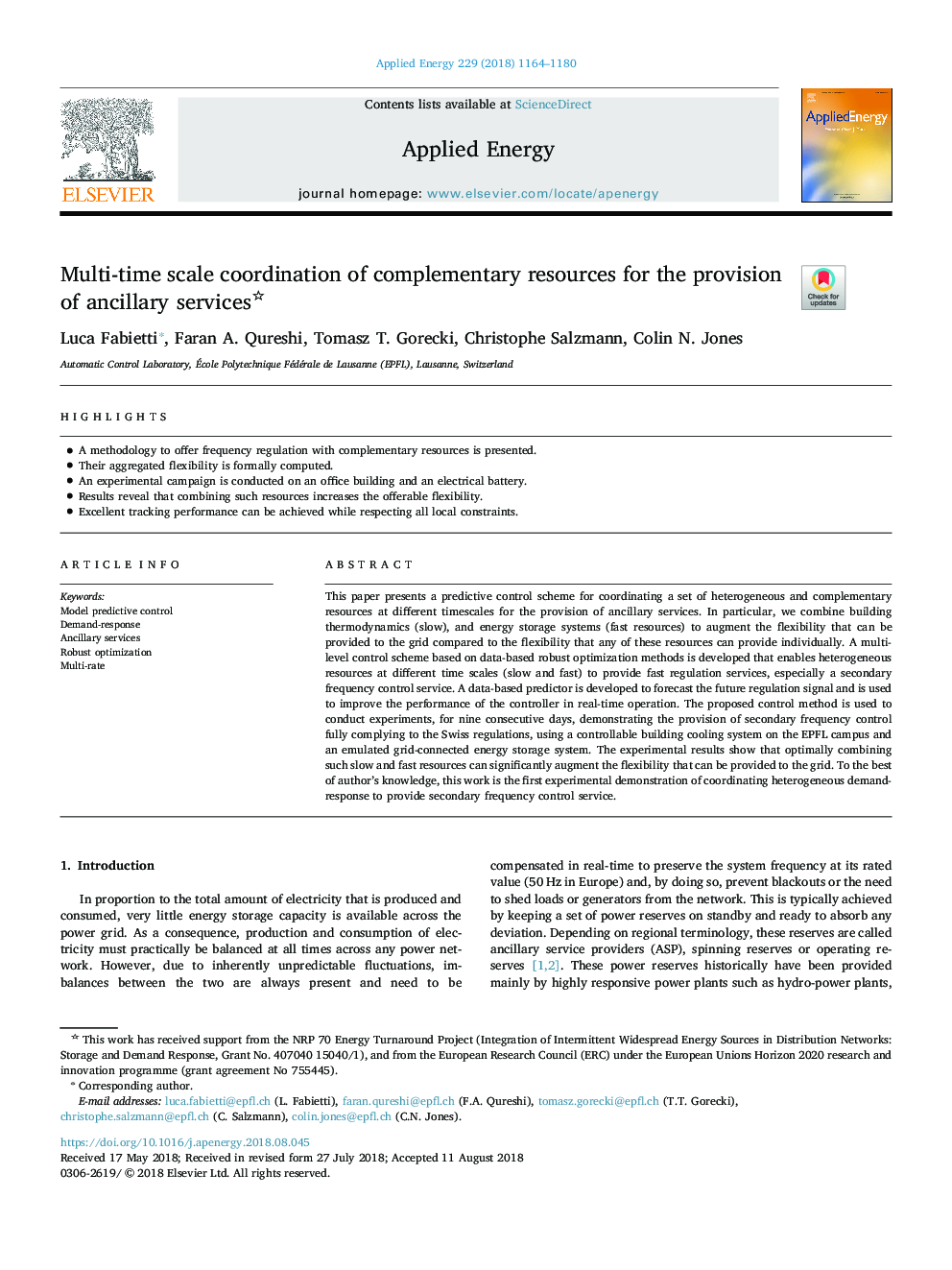| Article ID | Journal | Published Year | Pages | File Type |
|---|---|---|---|---|
| 11000853 | Applied Energy | 2018 | 17 Pages |
Abstract
This paper presents a predictive control scheme for coordinating a set of heterogeneous and complementary resources at different timescales for the provision of ancillary services. In particular, we combine building thermodynamics (slow), and energy storage systems (fast resources) to augment the flexibility that can be provided to the grid compared to the flexibility that any of these resources can provide individually. A multi-level control scheme based on data-based robust optimization methods is developed that enables heterogeneous resources at different time scales (slow and fast) to provide fast regulation services, especially a secondary frequency control service. A data-based predictor is developed to forecast the future regulation signal and is used to improve the performance of the controller in real-time operation. The proposed control method is used to conduct experiments, for nine consecutive days, demonstrating the provision of secondary frequency control fully complying to the Swiss regulations, using a controllable building cooling system on the EPFL campus and an emulated grid-connected energy storage system. The experimental results show that optimally combining such slow and fast resources can significantly augment the flexibility that can be provided to the grid. To the best of author's knowledge, this work is the first experimental demonstration of coordinating heterogeneous demand-response to provide secondary frequency control service.
Related Topics
Physical Sciences and Engineering
Energy
Energy Engineering and Power Technology
Authors
Luca Fabietti, Faran A. Qureshi, Tomasz T. Gorecki, Christophe Salzmann, Colin N. Jones,
